Uncertainty Propagation of Spectral Matching Ratios Measured Using a Calibrated Spectroradiometer
Abstract
:Featured Application
Abstract
1. Introduction
2. Measurement Method
3. Sources of Uncertainty
3.1. Uncertainty Budget Associated with the Spectral Responsivity
- Electrical uncertainty (lock-in amplifiers, current-voltage converters, experimental noise)
- Temperature uncertainty (measurement conditions at 25.0 ± 1.0 °C and thermometers calibrations)
- Optical uncertainty (the spatial non-uniformity of quasi-monochromatic light on the measurement plane, alignment of device under test and reference device, area of device under test and reference)
- Reference cell uncertainty (calibration and drift)
3.2. Uncertainty Budget Associated with the Spectrum Measurement
- Standard lamp calibration uncertainty and drift
- Internal calibration transfer uncertainty
- Temperature control of the detectors in outdoor conditions
4. Results
4.1. Contribution of Spectral Responsivity Errors
4.2. Contribution of Random Errors on Measured Spectrum
4.3. Contribution of Temperature Errors on Measured Spectrum
4.4. Overall Uncertainties
5. Conclusions
Acknowledgments
Author Contributions
Conflicts of Interest
Abbreviations
| Wavelength | |
| Spectral Mismatch Ratios between junctions i and k (i, k = 1…3, i ≠ k) | |
| Spectral responsivity of i-th junction | |
| Spectral irradiance measured at time t | |
| Reference spectral irradiance AM1.5D | |
| Short circuit current produced by junction i (i = 1…3) at time t | |
| Short circuit current produced by junction i (i = 1…3) with reference spectrum | |
| Standard uncertainty associated to a quantity | |
| Combined uncertainty associated to a quantity | |
| Expanded uncertainty associated to a quantity | |
| Hermite interpolant of the function f(x) on the nodes xi |
References
- Philipps, S.; Horowitz, K.; Kurtz, S. Current Technology Status of Concentrator Photovoltaic (CPV); Fraunhofer Institute for Solar Energy Systems ISE: Freiburg, Germany, 2016. [Google Scholar]
- Green, M.A.; Emery, K.; Hishikawa, Y.; Warta, W.; Dunlop, E.D.; Levi, D.H.; Ho-Baillie, A.W.Y. Solar cell efficiency tables (version 49). Prog. Photovolt. Res. Appl. 2017, 25, 3–13. [Google Scholar] [CrossRef]
- Ekins-Daukes, N.J.; Sandwell, P.; Nelson, J.; Johnson, A.D.; Duggan, G.; Herniak, E. What does CPV need to achieve in order to succeed? AIP Conf. Art. 2016, 1776, 20004. [Google Scholar]
- International Electrotechnical Committee (IEC). International Standard IEC62670-3, 1st ed.; IEC International Electrotechnical Committee: Geneva, Switzerland, 2017. [Google Scholar]
- Pavanello, D.; Galleano, R.; Kenny, R.; Müllejans, H.T. Uncertainty Propagation of Spectral Matching Ratios Measured Using a Calibrated Spectroradiometer. In Proceedings of the 13th European photovoltaic solar energy conference proceedings, Amsterdam, The Netherlands, 25–29 September 2017. [Google Scholar]
- International Electrotechnical Committee (IEC). International Standard IEC 62670-1, 1st ed.; IEC: Geneva, Switzerland, 2013. [Google Scholar]
- International Electrotechnical Committee (IEC). International Standard IEC60904-3, 3th ed.; IEC: Geneva, Switzerland, 2013; Volume 2016. [Google Scholar]
- Alfio, Q.; Riccardo, S.; Fausto, S. Matematica Numerica; Springer Science & Business Media: Berlin, Germany, 2000. [Google Scholar]
- International Electrotechnical Committee (IEC). International Standard IEC60904-8, 3th ed.; IEC: Geneva, Switzerland, 2014; Volume 2014. [Google Scholar]
- Ma, Y.; Zhang, Y.; Gu, Y.; Chen, X.; Xi, S.; Du, B.; Li, H. Tailoring the performances of low operating voltage InAlAs/InGaAs avalanche photodetectors. Opt. Express 2015, 23, 19278–19287. [Google Scholar] [CrossRef] [PubMed]
- Woolliams, E.R. Determining the Uncertainty Associated with Integrals of Spectral Quantities; European Association of National Metrology Institutes: Berlin, Germany, 2013. [Google Scholar]
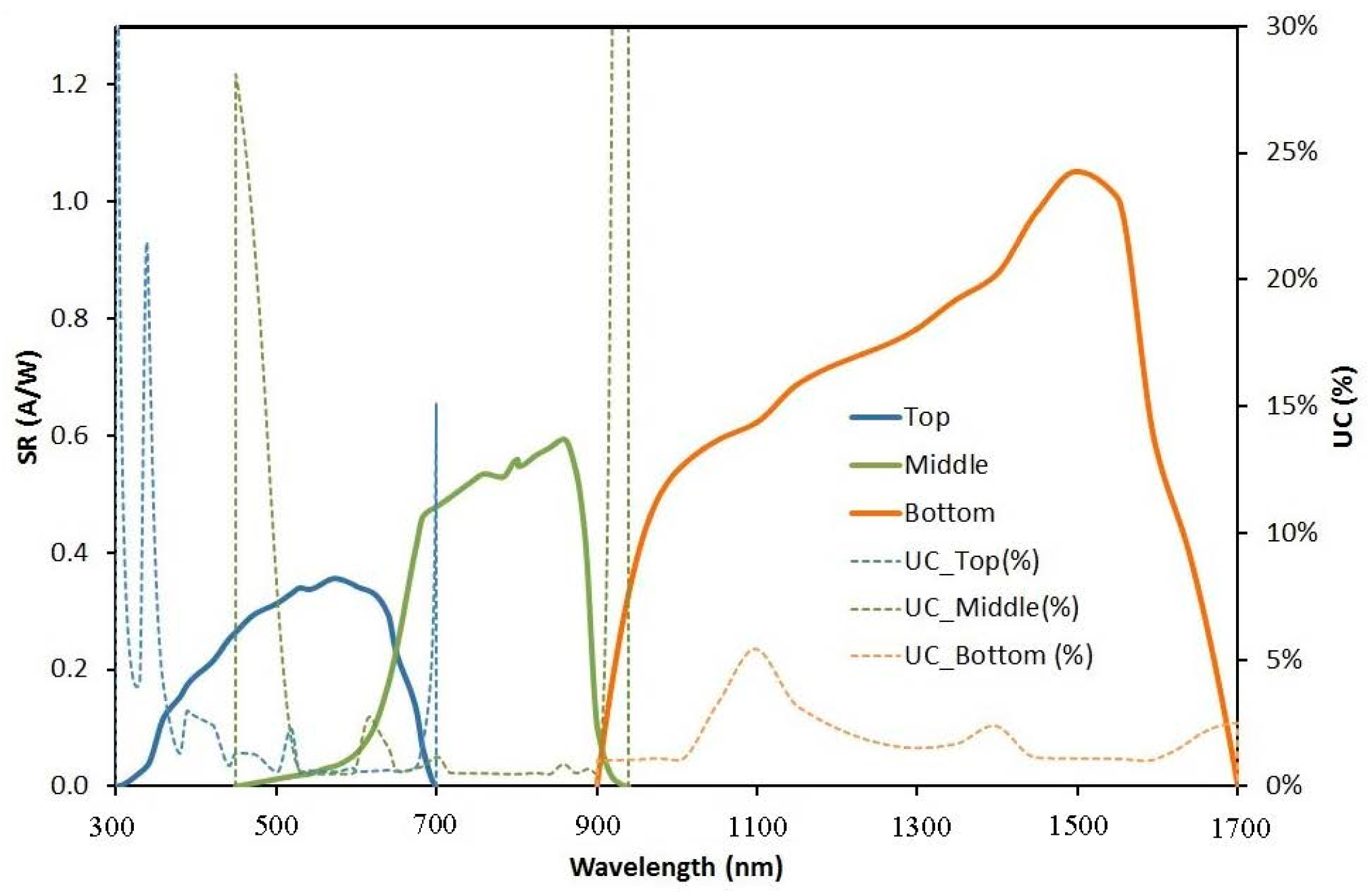
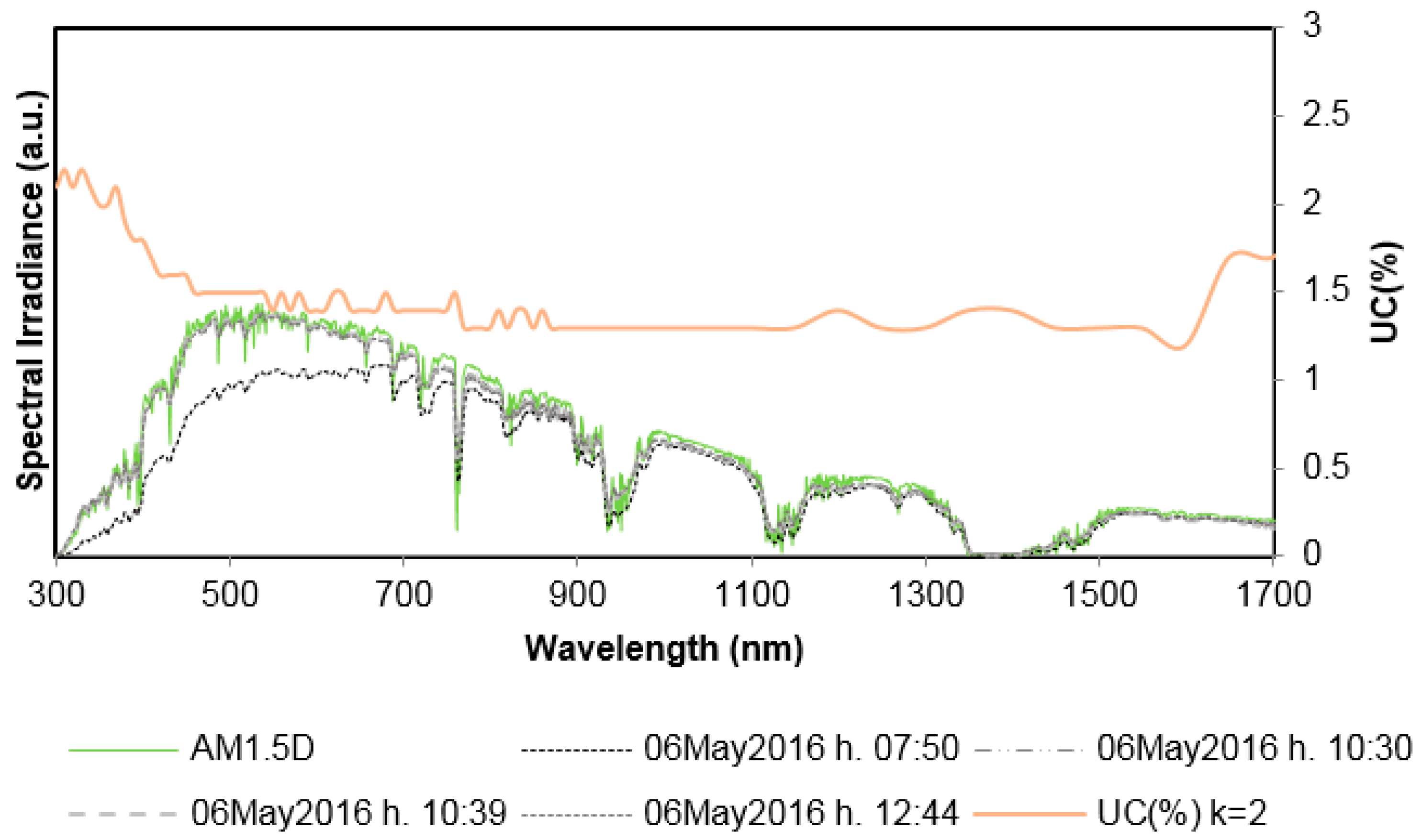
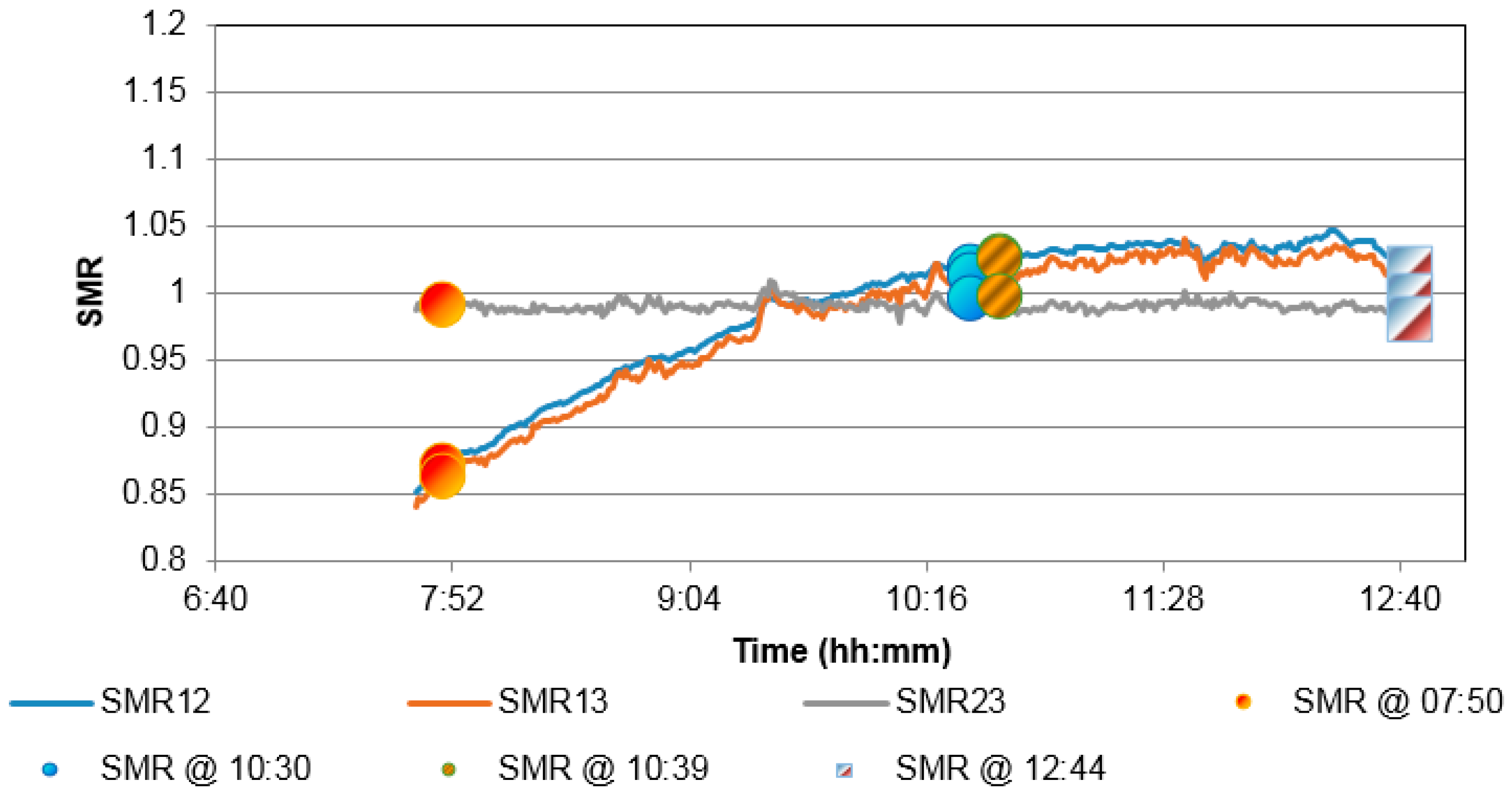
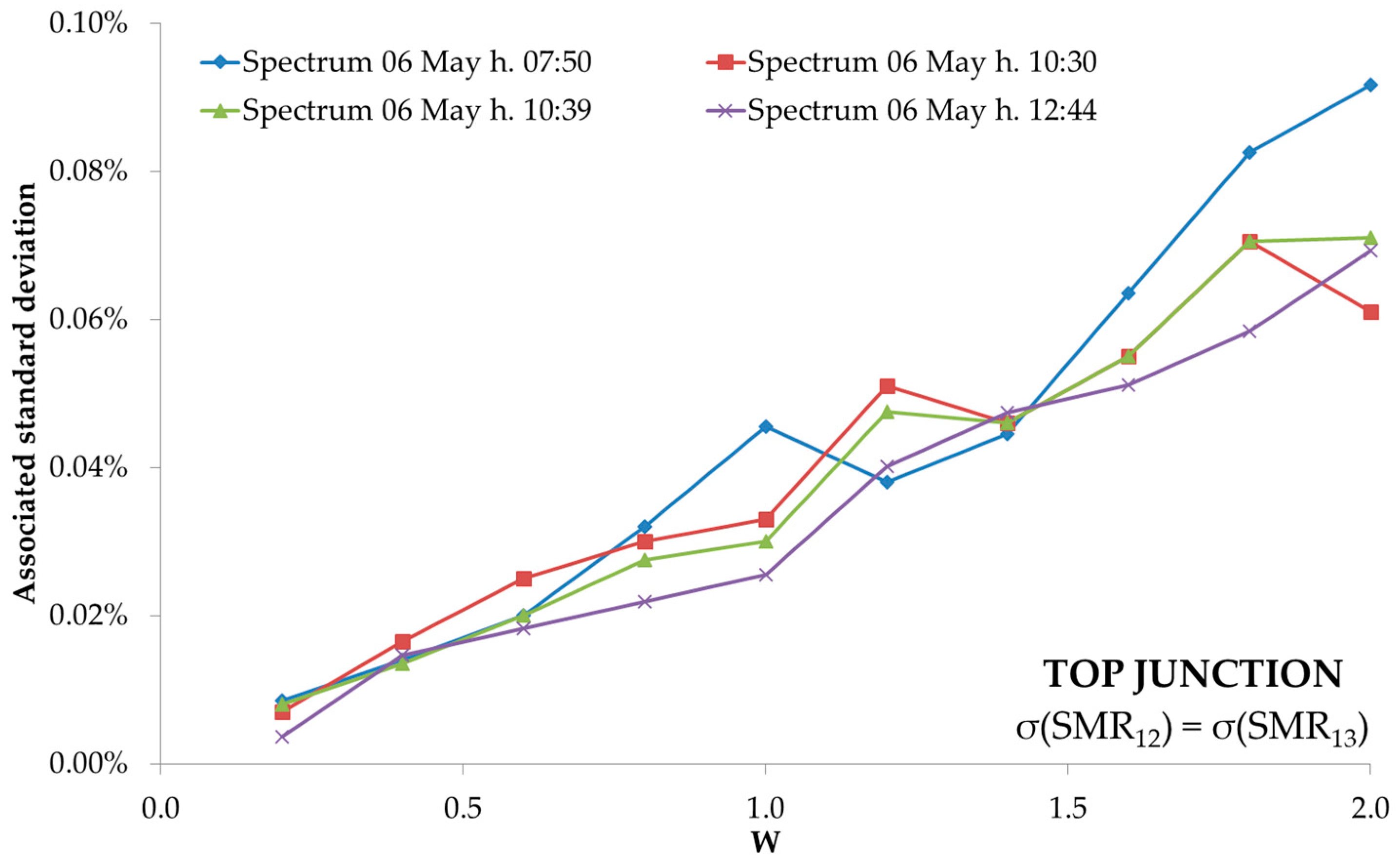
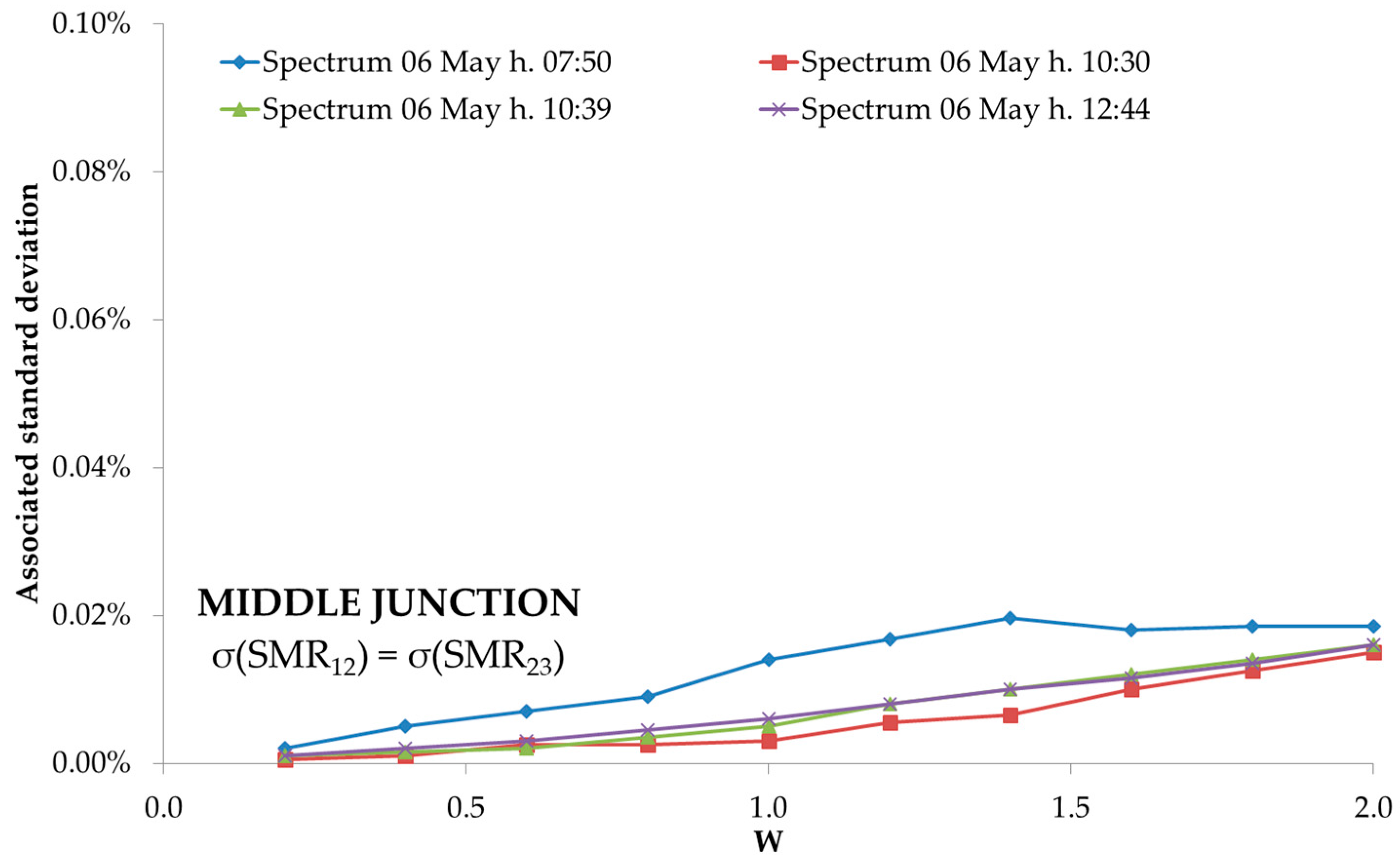
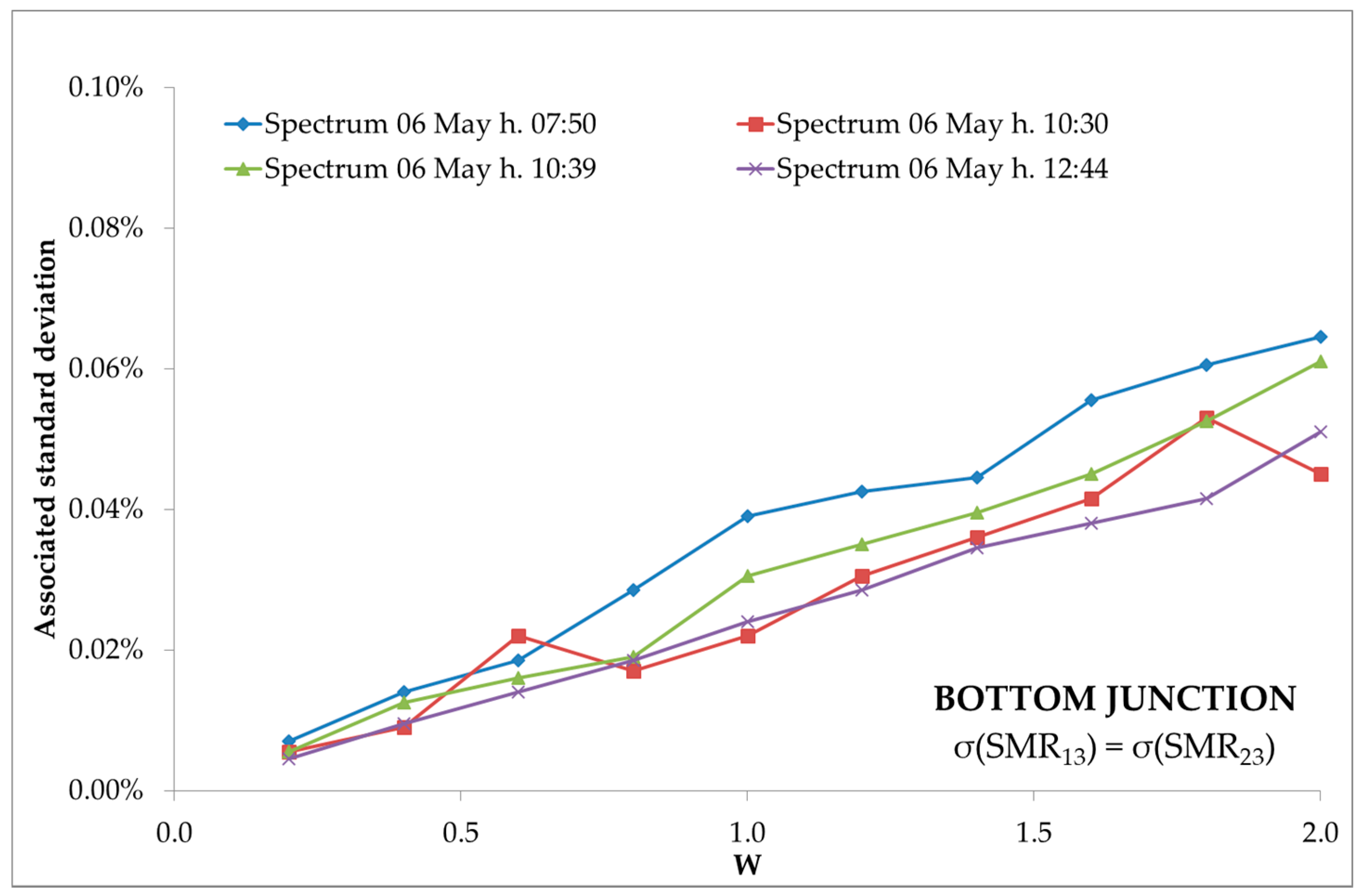
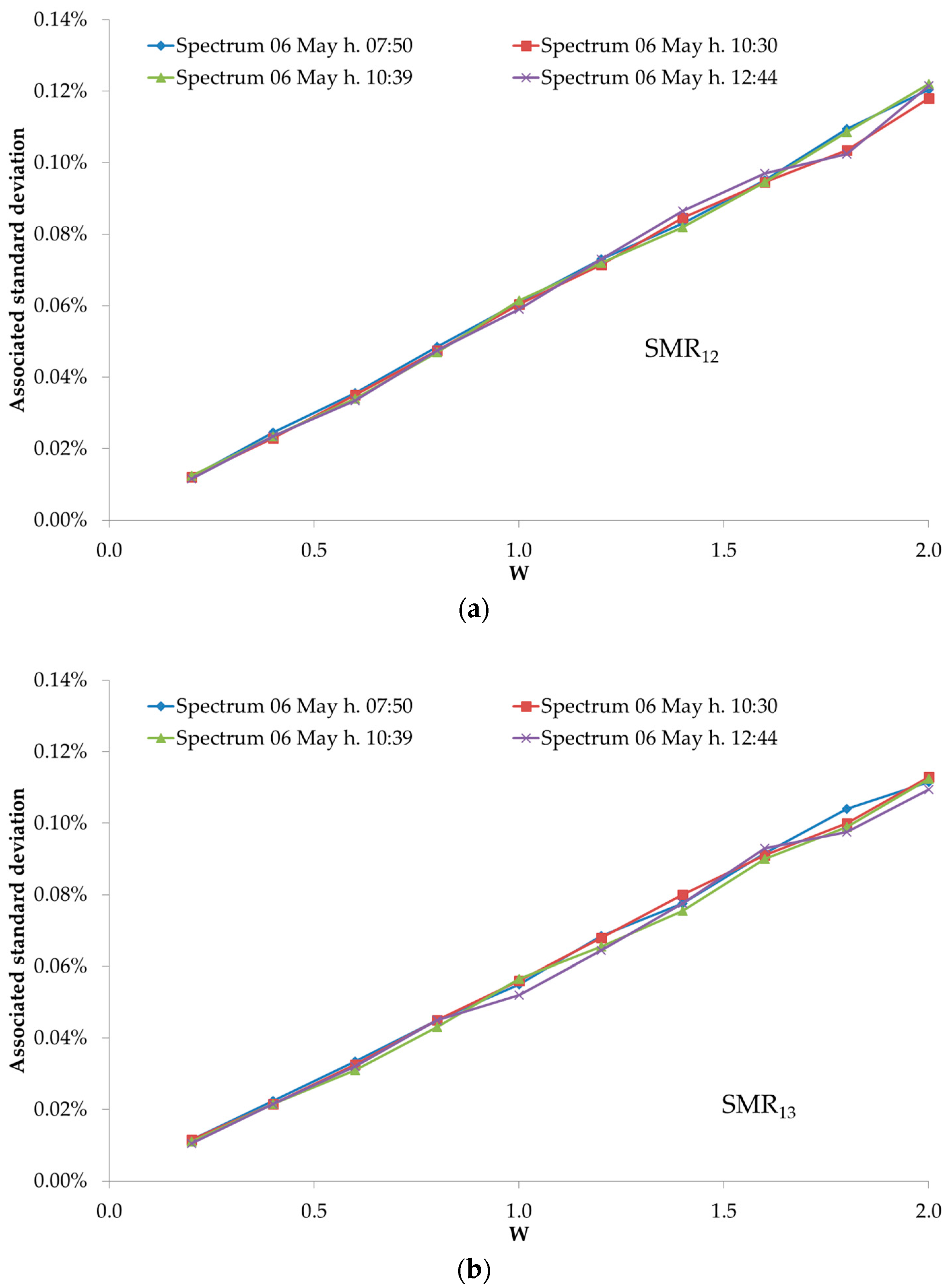
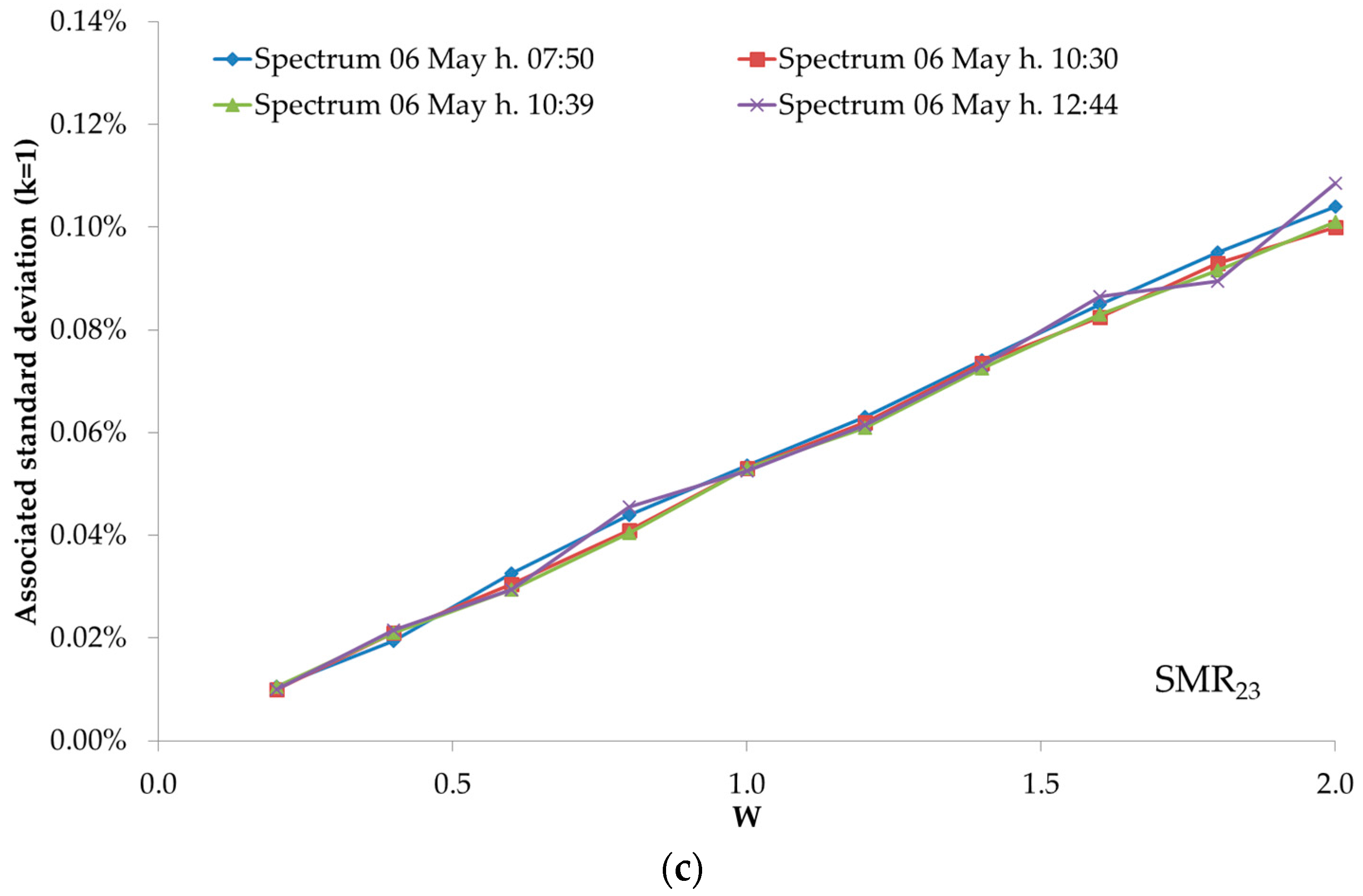
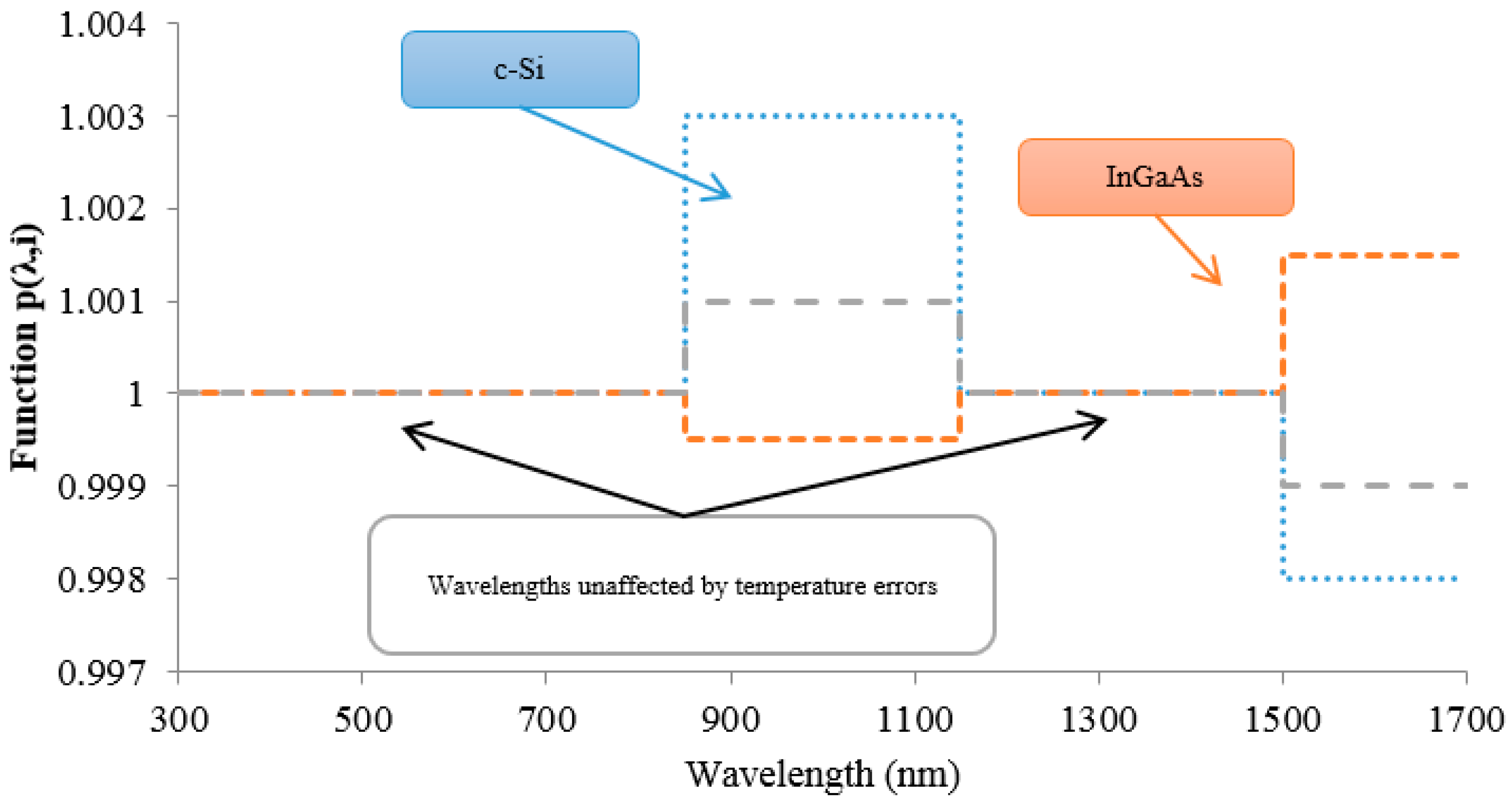

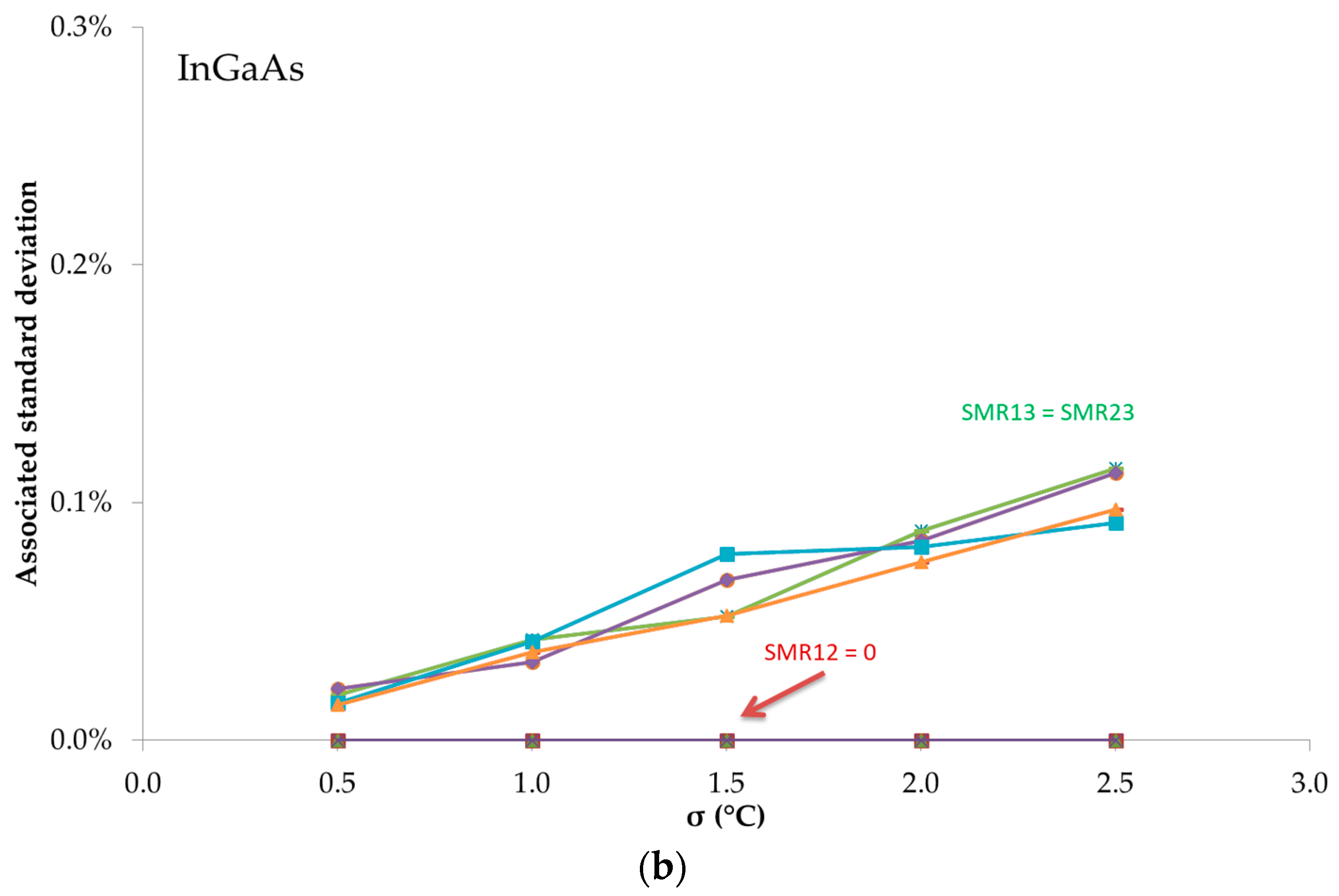
| () | σ (SMR12) | σ (SMR13) | σ (SMR23) |
|---|---|---|---|
| c-Si | 0.05% | 0.10% | 0.15% |
| InGaAs | 0 | 0.08% | 0.08% |
| (k = 1) | σ (SMR12) | σ (SMR13) | σ (SMR23) |
|---|---|---|---|
| Spectrum 07:50 | 0.10% | 0.15% | 0.21% |
| Spectrum 10:30 | 0.09% | 0.17% | 0.23% |
| Spectrum 10:39 | 0.08% | 0.14% | 0.17% |
| Spectrum 12:44 | 0.09% | 0.15% | 0.21% |
| Average | 0.09% | 0.15% | 0.21% |
| Expanded UC (k = 2) | 0.18% | 0.30% | 0.42% |
© 2018 by the authors. Licensee MDPI, Basel, Switzerland. This article is an open access article distributed under the terms and conditions of the Creative Commons Attribution (CC BY) license (http://creativecommons.org/licenses/by/4.0/).
Share and Cite
Pavanello, D.; Galleano, R.; Kenny, R.P. Uncertainty Propagation of Spectral Matching Ratios Measured Using a Calibrated Spectroradiometer. Appl. Sci. 2018, 8, 186. https://doi.org/10.3390/app8020186
Pavanello D, Galleano R, Kenny RP. Uncertainty Propagation of Spectral Matching Ratios Measured Using a Calibrated Spectroradiometer. Applied Sciences. 2018; 8(2):186. https://doi.org/10.3390/app8020186
Chicago/Turabian StylePavanello, Diego, Roberto Galleano, and Robert P. Kenny. 2018. "Uncertainty Propagation of Spectral Matching Ratios Measured Using a Calibrated Spectroradiometer" Applied Sciences 8, no. 2: 186. https://doi.org/10.3390/app8020186





